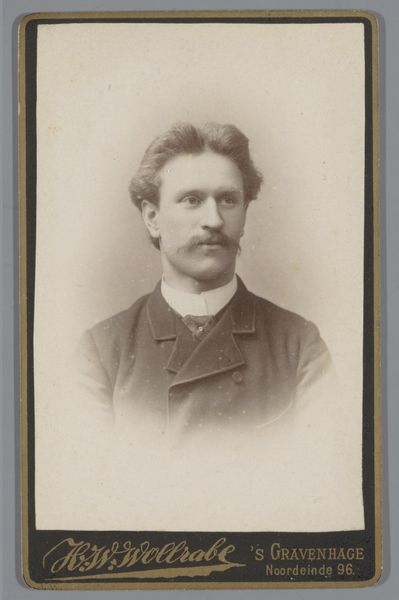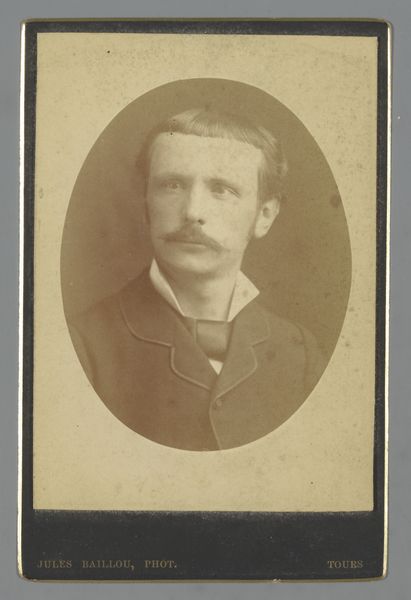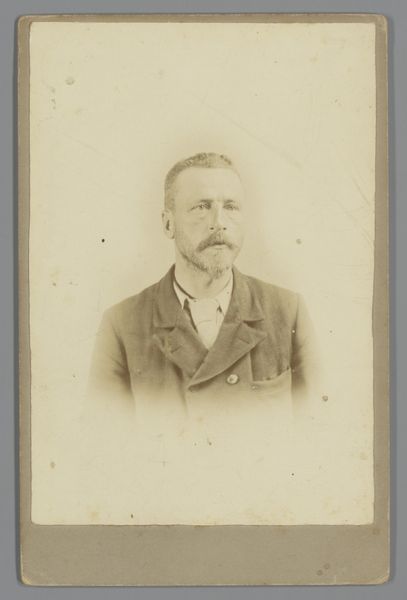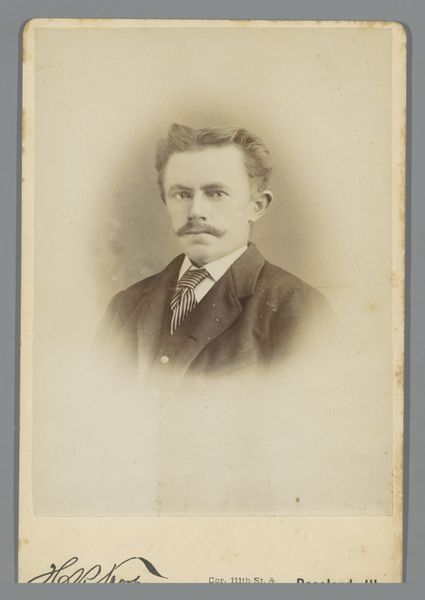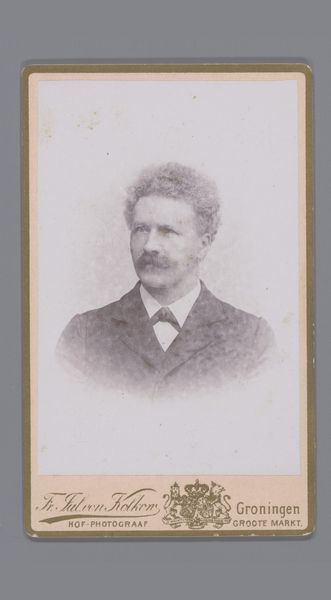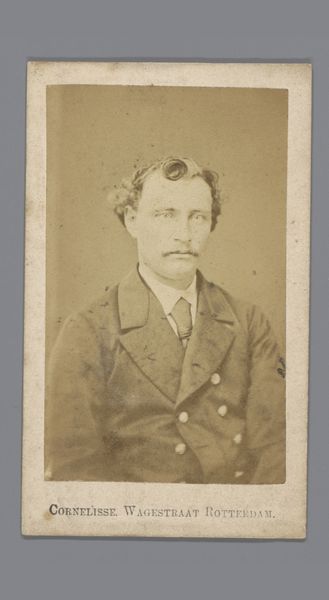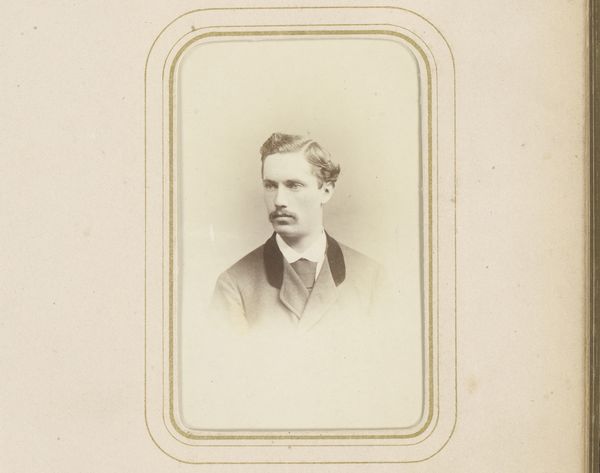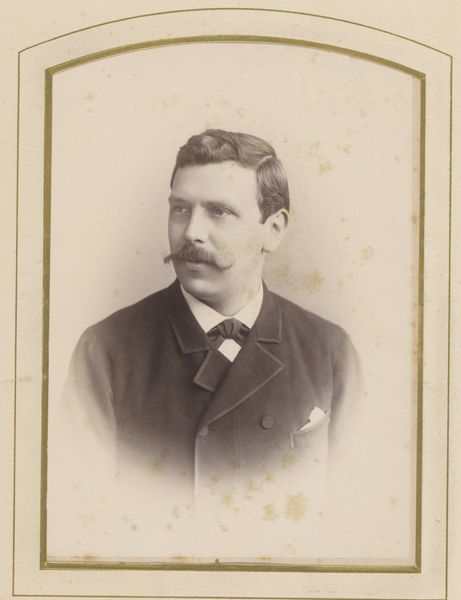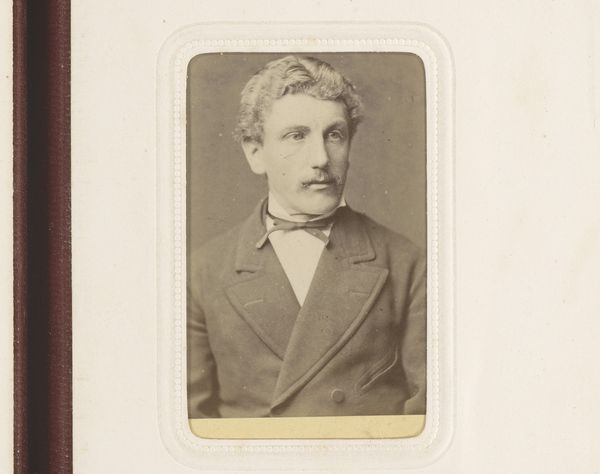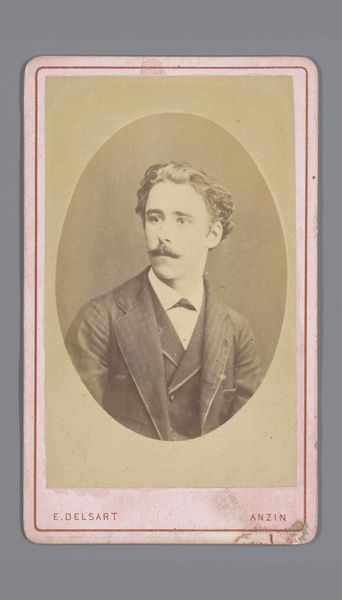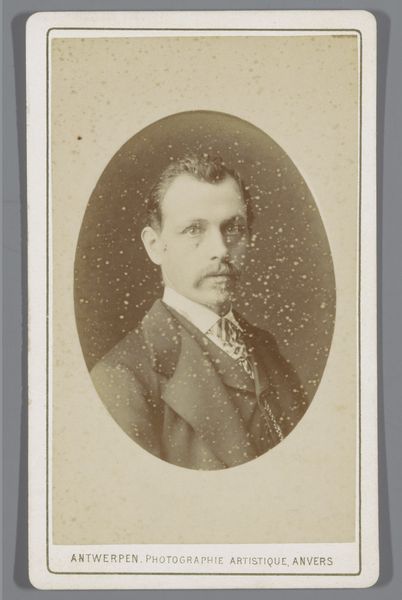
photography
#
portrait
#
sculpture
#
photography
#
genre-painting
#
watercolor
Dimensions: height 103 mm, width 64 mm
Copyright: Rijks Museum: Open Domain
Curator: This is "Portret van een onbekende man," or "Portrait of an Unknown Man," created sometime before 1900 by Jan Frederik Rienks. It's a very evocative photograph, presented in a typical oval format of the time. Editor: The sepia tones give it such a somber, almost wistful feel, don't you think? And the composition, tightly cropped around the figure, really focuses our attention. Curator: Exactly. It speaks to the burgeoning middle class of the late 19th century and their aspirations to document their lives and identities. Photography became more accessible, and these studio portraits offered a way to project a desired image to the world. Think about the politics inherent in crafting this identity. Editor: Absolutely. And note how the light falls across his face, highlighting the mustache and carefully styled hair. The composition reinforces a kind of reserved confidence. Curator: Look at his clothing; the cut of his jacket, the stiff collar. Each detail reinforces a social position. These portraits were about constructing and disseminating a certain visual language of respectability. Rienks was likely catering to the bourgeois values of the era. Editor: Yes, but consider the use of soft focus. It almost abstracts the figure. This suggests the universal, blurring the lines between personal likeness and idealized type. The man is anybody. Curator: That's an interesting take, but to push back slightly, I think the standardization of portraiture itself works to universalize subjects, even if individual expression is subtly present. His slight smirk, could reflect an active choice and subvert cultural norms. Editor: I can see that tension playing out. So, while seemingly a simple portrait, it really embodies these intricate discussions around class, identity, and representation within the cultural context of its time. Curator: Precisely. It serves as a fascinating record of social aspirations and the performance of identity. It brings these figures alive again in a way no history book can. Editor: It's also worth recognizing, the piece operates on a visual level of simplicity and refinement, providing a solid frame for richer context. It all makes a beautiful whole.
Comments
No comments
Be the first to comment and join the conversation on the ultimate creative platform.
